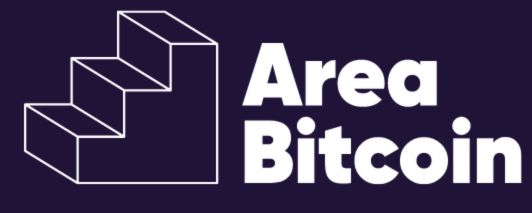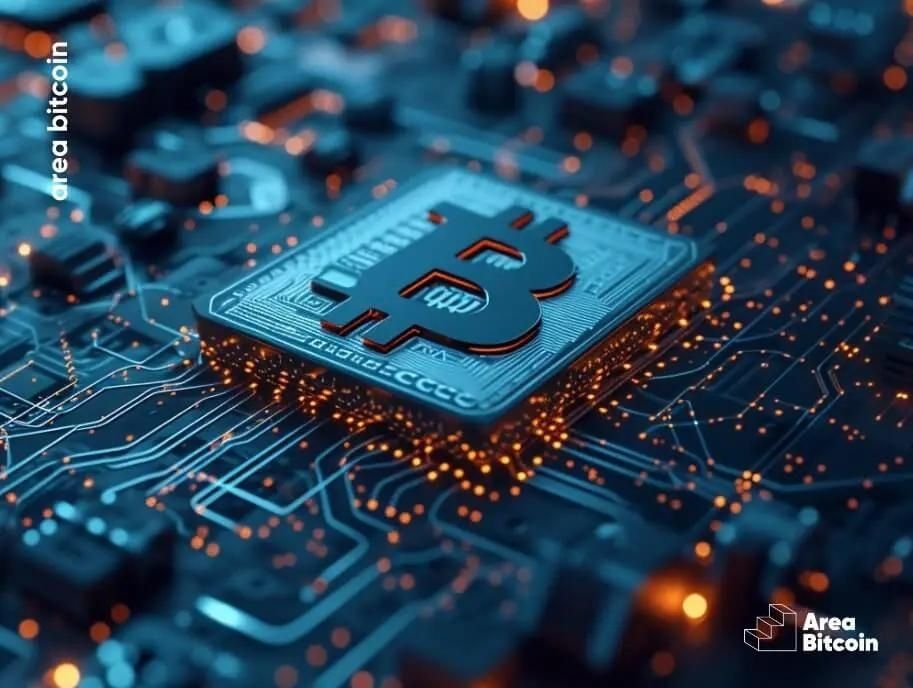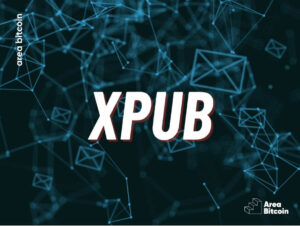The mining process can be complex, and since Bitcoin’s inception, updates to the Bitcoin mining protocol have been implemented. After all, it’s essential to ensure that this process is secure to protect the network and prevent any type of attacks.
That said, Stratum V2 is a recent update to the mining protocol that emerged ten years after its first version, Stratum V1. This update is significant as it changes several aspects of how mining will be performed going forward.
Stratum V1 was introduced to replace a protocol that had vulnerabilities as mining became more popular.
As mining continues to gain importance alongside the adoption of Bitcoin, a change in how it is performed has become necessary.
In this article, we’ll explain what Stratum V2 is and what new features this protocol offers compared to its previous version.
Excited? Stay tuned!
Table of Contents:
How does Bitcoin mining work?
Before diving into protocols, it’s important to understand the fundamentals of mining itself and how it has evolved over time.
With that in mind, Bitcoin mining is similar to searching for something precious, like gold, except in the Bitcoin network, the “precious thing” is the hash of each block.
In gold mining, miners dig until they find gold. Once found, they possess something scarce and valuable. Gold is rare, and over time, it becomes harder and more expensive to mine. This is because deeper digging is required, demanding more modern and efficient equipment to access increasingly complex sites.
With Bitcoin, a very similar scenario unfolds. On the Bitcoin network, miners compete against each other through trial and error to be the first to find the hash that validates each block of information.
Miners leverage computational power and invest in high-capacity machines to try to find the block’s hash as quickly as possible.
When they do find the hash—that is, the correct solution—they present it to the network. The nodes then verify if the proposed block adheres to the network’s rules.
If everything checks out, this block is added to the blockchain, propagated across the network, and all participants include this block in their copies of the blockchain. Ultimately, miners receive Bitcoin as a reward for completing this task.
This process is known as proof of work.
In summary, this is what mining represents. However, this process has evolved significantly over time. In the early days, a miner could simply connect their computer to the Bitcoin network and begin mining.
Today, with the evolution of mining technology and machinery, the process has become more costly, and it’s practically impossible for a miner to earn rewards on their own.
This is why miners now often join mining pools.
What are mining pools?
Mining pools are collaborative groups that allow individual miners to combine their computational power, enhancing their chances of finding a block on the Bitcoin network. The term “pool” refers to this collective pooling of resources.
As we’ve seen before, given the intense competition and high computational requirements, it’s nearly impossible for a solo miner to find a block on their own. In a mining pool, multiple miners contribute their machines’ power to improve their collective chances of success.
By pooling resources, these groups can find blocks more efficiently and quickly than individual miners could alone. So, when a pool successfully mines a block, all participants share in the rewards, proportionate to their contributed computational power.
Today, several large mining pools with significant computational capabilities dominate the Bitcoin mining ecosystem.

Mining protocols
Mining protocols have evolved significantly since the early days of mining to enhance performance and the way miners communicate with the network.
Getwork Protocol
One of the earliest protocols to be developed was Getwork, an open-source protocol that enabled solo miners to start mining directly.
This protocol utilized HTTP for connections to the Bitcoin network. However, HTTP is generally used for web pages and is not ideal for coordinating Bitcoin mining nodes.
As mining grew in popularity and required increased security, the limitations of the Getwork protocol became apparent. By 2012, as the mining hashrate surged, its inefficiencies were more evident.
During this period, mining pools also started to gain traction. While miners initially could mine solo with their own machines, the expansion of mining activities made joining pools a more viable option.
Consequently, the Getwork protocol no longer satisfied the evolving needs of miners, particularly with the shift towards organized mining in pools. This led to the proposal and adoption of a new protocol: Stratum V1.
Stratum Protocol (V1)
Recognizing the limitations of the Getwork protocol, Marek “Slush” Palatinus, who created and founded Slush Pool in 2010, developed the Stratum Protocol (V1). This new protocol was designed to enhance communication between miners and mining pools.
Thus, Stratum V1 revolutionized the way miners interact with mining pools, making the process much more efficient. Since its introduction, it has become the standard protocol used in Bitcoin mining.
The Stratum V1 protocol not only allowed for greater scalability in mining operations but also improved communication between miners and the Bitcoin network, as well as within their respective pools.
Additionally, Stratum introduced the capability for miners to modify more fields in a block header through the “extranonce” feature, further optimizing the mining process.
Other benefits of Stratum V1 include:
- Stratum mining pool
- Block confirmation issue resolution
- Work-based Vardiff support
- Block hash support solution
- Log rotation
- Initial low-difficulty share confirmation
- Support for multiple wallets
- Immediate addition of new wallets
- Support for MySQL/PostGres/SQLite database
- Adjustable database commit parameters
- Ignore password verification for workers
- Support for coins that use Proof-of-Work and Proof-of-Stake
- Support for transaction messaging
What is the Stratum V2 update?
Stratum V2 is an update to the Bitcoin mining protocol that significantly enhances its security, efficiency, and decentralization, granting miners increased control over the inclusion of transactions in blocks.
The new Stratum protocol update, which comes 10 years after the first, promises to make mining even more efficient and secure than the previous version.
The Stratum V2 (SV2) protocol, developed by Pavel Moravec and Jan Čapek in collaboration with Matt Corallo and other experts, enhances data transfer speeds, lowers the infrastructure requirements for mining equipment, and improves security.
One of the main innovations of Stratum V2 is the inclusion of three subprotocols. This update enables miners to select their own transaction sets through a negotiation process with pools, enhancing decision-making decentralization.
Subprotocols of Stratum V2
1. Job Negotiation Protocol
The job negotiation protocol allows miners to negotiate a block template, including the transaction set, with a pool. This makes pooled mining more akin to solo mining, thereby increasing decentralization.
The results of the negotiation can be reused across all mining connections with the pool, significantly reducing computational intensity.
This protocol is separate and optional from the Mining Protocol and can be offered as a third-party service for mining farms.
2. Template Distribution Protocol
The template distribution protocol is employed to gather information about the next block from Bitcoin Core.
Specifically, it facilitates communication with a component of Bitcoin Core known as “bitcoind,” which implements the Bitcoin protocol for Remote Procedure Call (RPC) use.
Essentially, bitcoind enables the integration of the Bitcoin protocol with other software.
3. Work Distribution Protocol
The work distribution protocol is designed to transmit newly negotiated work to interested nodes, which may be proxies or actual mining devices. This protocol complements the Job Negotiation Protocol.
Therefore, if miners are not negotiating their own work (i.e., choosing their own transaction sets), the jobs are distributed directly from pools to proxies and mining devices.
Features of Stratum V2
- Enhanced security: Implements advanced security measures to protect against attacks, with robust encryption and authentication mechanisms, ensuring secure communication channels between miners and pools.
- Decentralization and miner autonomy: Empowers individual miners, allowing them to choose which transactions to include in the blocks they mine.
- Efficiency in data transfer: Reduces bandwidth requirements and improves overall mining process efficiency by optimizing data transfer between miners and pools.
- Flexible infrastructure: The protocol is designed to be adaptable and flexible, accommodating various mining setups and configurations.
- Multilevel authorization: Allows different levels of authorization, providing an additional layer of security.
- Reduced attack surface: By simplifying and streamlining communication protocols and reducing the amount of data transferred, SV2 decreases the potential attack surface for malicious actors.
- Diverse pool ecosystem: By lowering entry barriers for creating mining pools, SV2 encourages a more diverse and distributed pool ecosystem, reducing the risk of one pool gaining too much power over the network.
- Reduced bandwidth usage: SV2 reduces the amount of data that needs to be transferred between miners and pools. This reduction in data transfer not only speeds up the mining process but also makes it more accessible for miners with limited internet bandwidth.
- Optimized infrastructure: Simplified communication protocols reduce the computational and infrastructure requirements for mining operations. This optimization means lower costs and greater efficiency, making mining more sustainable and profitable, especially for smaller operators.
What is the impact of the Stratum V2 protocol on Bitcoin?
The most significant impact of the Stratum V2 protocol on Bitcoin is that it levels the playing field among mining pools, ensuring that no single pool dominates.
In practice, for everyday users, Stratum V2 might not seem to change much. However, the biggest impact will be on miners and the industry surrounding mining.
After all, today there is a major discussion about the centralization of mining by large pools.
Therefore, the Stratum V2 protocol aims to decentralize this process further, ensuring that all pools have equal power. In theory, this means that every participant in the network has equal influence, based on their computational power, and miners gain more control over their transactions.
Consequently, it becomes more challenging for governments or large corporations to manipulate the mining process through alliances with specific pools.
Conclusion
Mining is an important process for Bitcoin, functioning as the mechanism that drives the network. Miners are essential for discovering blocks, processing transactions, and broadcasting this information across the network, thereby maintaining the blockchain’s openness and immutability.
Therefore, it’s vital that this process is executed with the highest security and without compromising the network’s decentralization, which is one of Bitcoin’s fundamental principles.
For regular Bitcoin users, understanding this protocol and its implications is another way to stay informed about developments within Bitcoin. However, this does not necessarily mean you need to take any specific action in your daily life.
Nevertheless, it is important to recognize that advancements in the Bitcoin industry, such as Stratum V2, can indirectly impact all network users.
I hope this article has enhanced your understanding of Stratum V2.
Until next time, and opt out!
Share on your social networks:

Founder of Area Bitcoin, one of the largest Bitcoin education projects in the world, she is a marketer, passionate about technology, and a full-time hands-on professional. She has participated in major Bitcoin conferences such as Adopting Bitcoin, Satsconf, Surfin Bitcoin, and Bitcoin Conference.
Did you like this article? Consider buying us a cup of coffee so that we can keep writing new content! ☕







